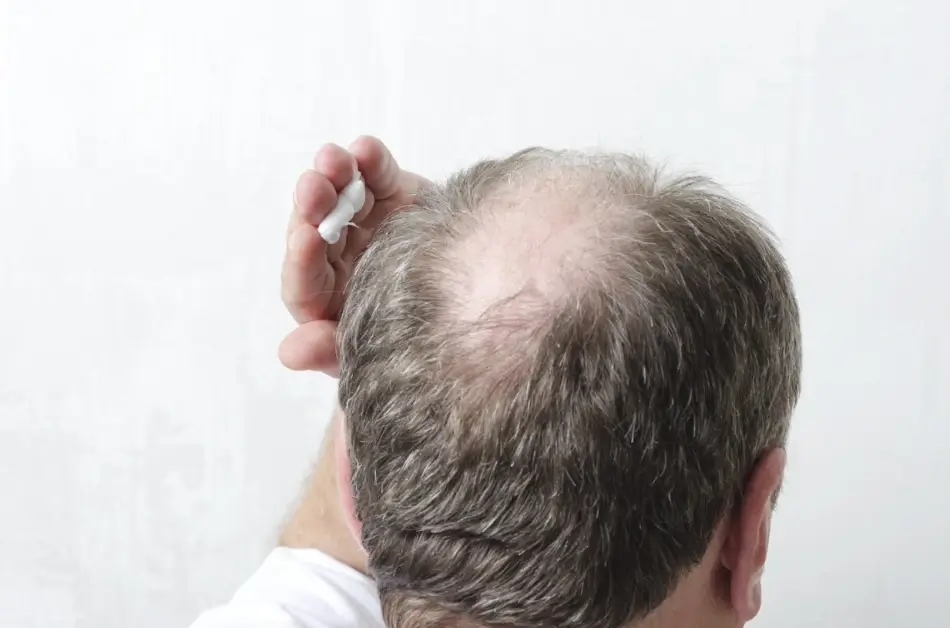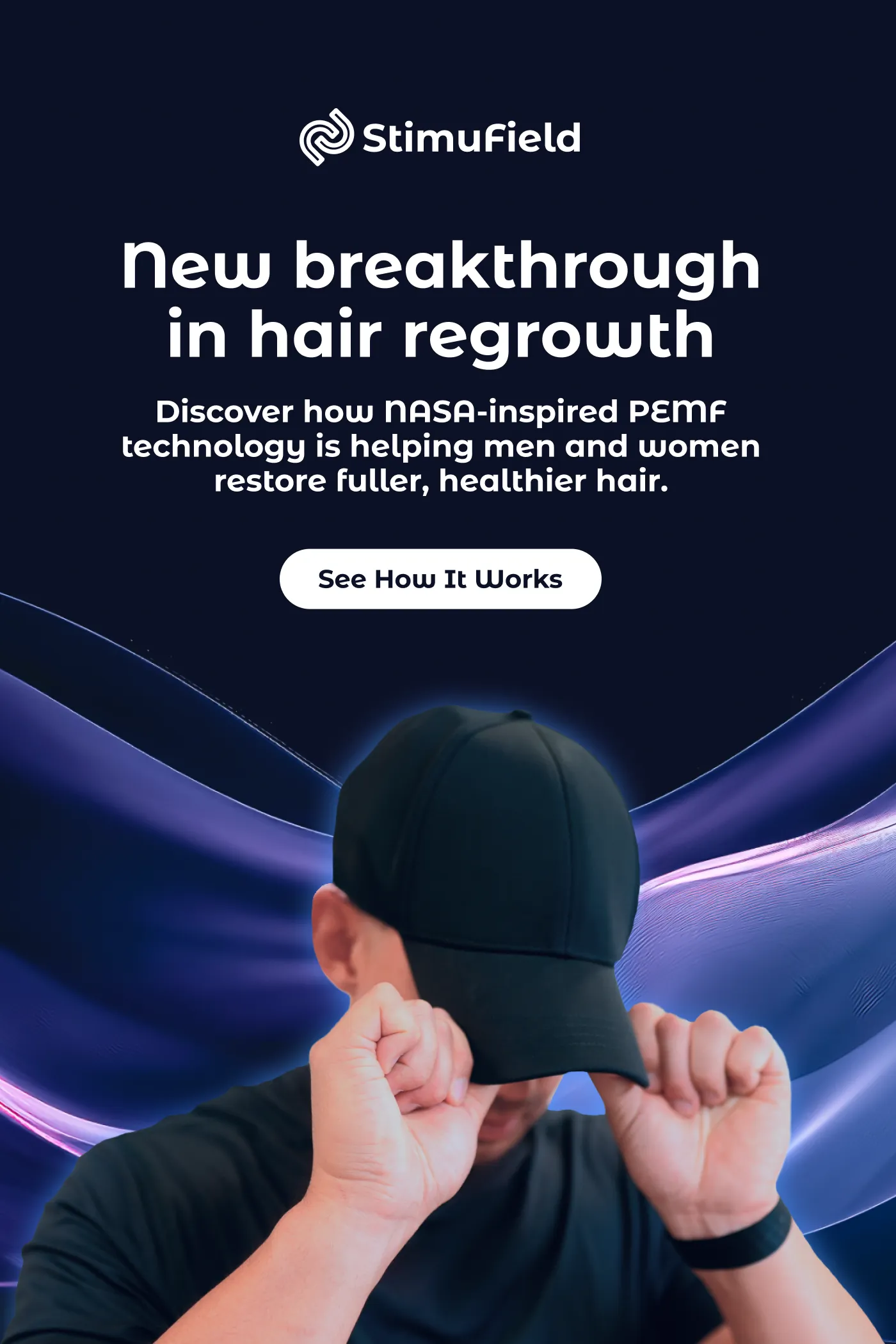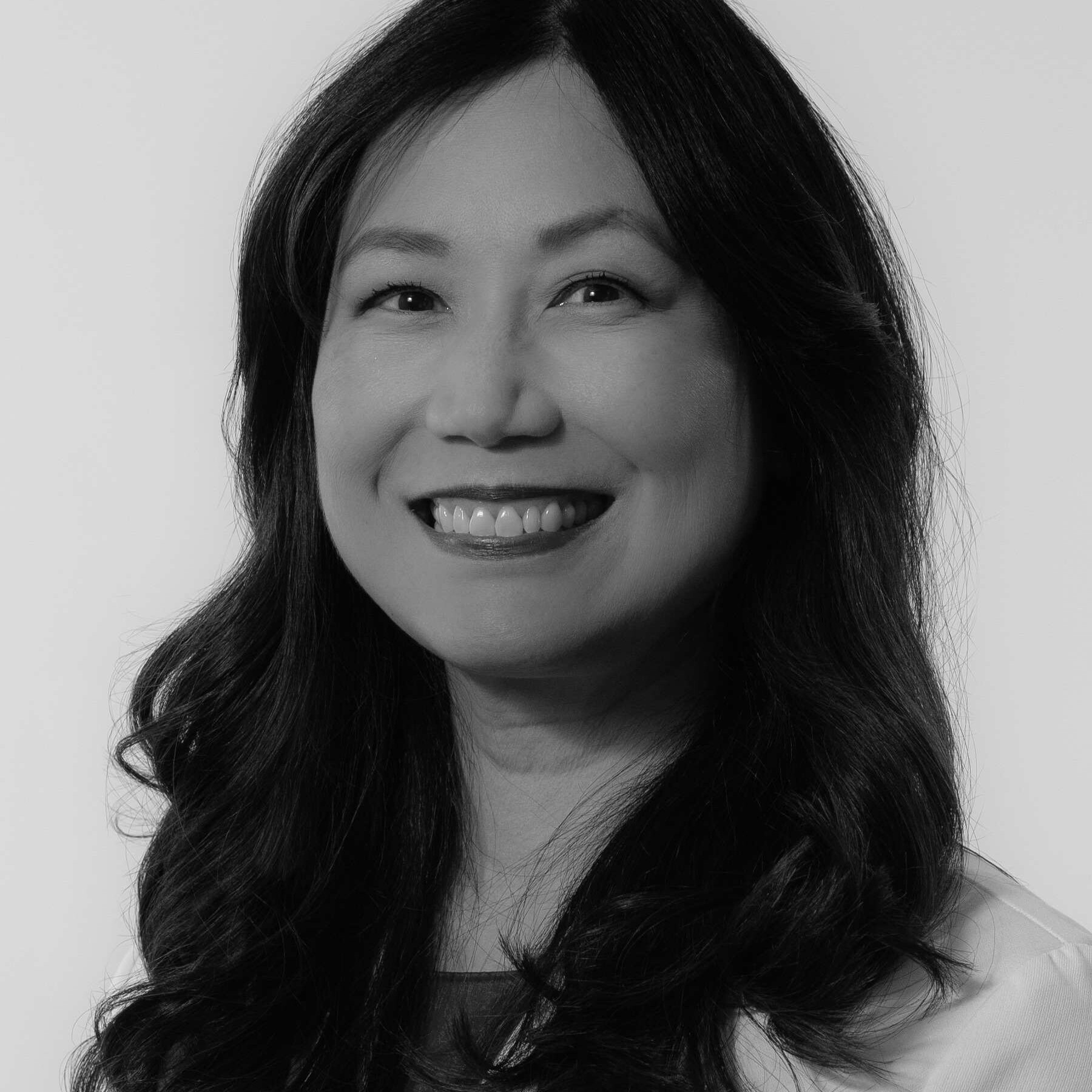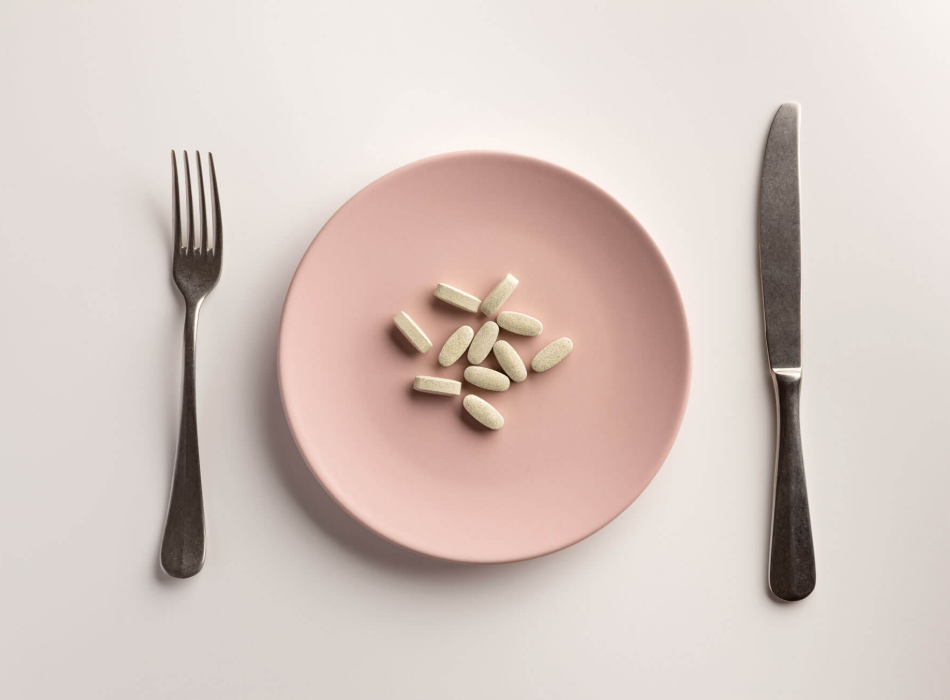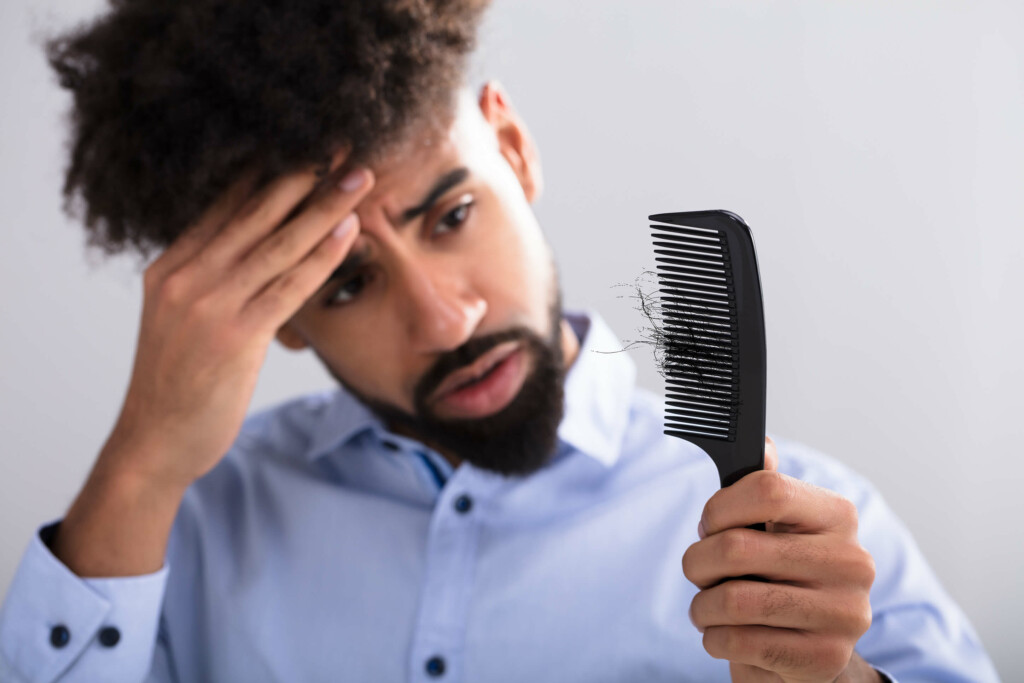Finasteride is a powerful drug that can treat hair loss, such as androgenic alopecia. (1) It can be taken orally or applied topically to the scalp.
Although oral finasteride is FDA-approved for male androgenic alopecia with excellent results, it can have systemic side effects. However, it’s generally well tolerated. (1)
Topical finasteride is not yet FDA-approved but shows great promise as a hair loss treatment, and research suggests there are fewer side effects. (2) Both forms of finasteride require a prescription because medical monitoring is required to ensure effective and safe treatment. (3)
What Is Finasteride?
Finasteride is a drug that was originally used to treat benign prostatic hypertrophy (BPH), a condition in which the prostate gland enlarges. After a few years, the oral form of finasteride in a lower dose was FDA-approved to treat male androgenic alopecia. For men, oral finasteride is taken as a tablet once a day, typically at a 1-milligram dose. (1)You might have heard this condition called male pattern baldness or androgenetic alopecia. (1)
Oral finasteride is not yet FDA-approved to treat hair loss conditions in females but is sometimes used off-label to treat female pattern hair loss, hirsutism, and polycystic ovarian syndrome, often with positive outcomes. (4)However, women who are pregnant or may become pregnant should not use finasteride or even handle the crushed or broken tablets, as finasteride can cause birth defects in male babies.
The topical form of finasteride is a newer formulation of the drug and is not yet FDA-approved as a hair loss treatment. However, studies have shown it may be a safe and effective alternative. (2) Topical finasteride is applied directly to the scalp at a dose of up to 1 milliliter per day, once a day. It comes in the form of a clear, odorless liquid. (2)
How Does Finasteride Work?
Androgenic alopecia is one of the most common forms of hair loss affecting both men and women. (5) To understand how finasteride works, it’s important to understand what causes androgenic alopecia. Androgens are hormones found in the human body. They’re usually helpful and do important jobs like helping with hair growth, maintaining the female reproductive system, and male sexual development. (5)
Dihydrotestosterone (DHT) is a type of androgen. When there’s too much of it in the body, it binds to the hair follicles in excess. This can cause the hair follicles to shrink and the hair growth cycle to shorten. (2,5)Unfortunately, this results in thinner, weaker strands of hair. It makes it harder for hair to regrow and, over time, leads to balding. (5)
Finasteride is a DHT blocker. This means that it blocks testosterone from being converted into DHT. Oral finasteride lowers the levels of DHT in the patient’s bloodstream by up to 70 percent, preventing so much of it from attaching to the hair follicles. Over time, this allows thicker, healthier hair to grow. (1,6)
Topical finasteride is also a DHT blocker and works similarly. However, it’s applied directly to the scalp. Instead of reducing DHT levels in the blood, it directly blocks DHT at the scalp. It reduces the levels of DHT attaching to the hair follicles, tackling hair loss. (2) A systematic review of topical finasteride as a treatment for male androgenic alopecia found it was effective in 73 percent of treated patients. (2)
Topical Finasteride Vs Oral Finasteride: A Deep Dive
Oral finasteride is an FDA-approved medication for the treatment of treat male pattern baldness and is very effective, but it can cause systemic side effects. Topical finasteride shows great promise as a treatment for hair loss with few side effects, but is not as well researched and is not yet FDA-approved.
Oral vs Topical Finasteride Effectiveness
Studies have shown positive outcomes for both topical and oral finasteride as hair loss treatments. In a double-blind, randomized clinical trial, 45 men with androgenic alopecia were divided into two groups. One group was treated with topical finasteride and the other with oral finasteride. The results showed a similar amount of increased hair growth in both groups. This means that both topical and oral finasteride were equally effective. However, the oral finasteride worked more quickly, with visible results after just two months compared to three months. (2)
Another study comparing patients taking topical finasteride versus oral finasteride found that there was a decrease in plasma DHT levels with both methods after one week. It also showed that the topical drug wasn’t absorbed into the patient’s system at as high levels as the oral drug, meaning it’s less likely to cause serious side effects. (2)
Topical finasteride is sometimes combined with other topical treatments, including minoxidil. Minoxidil is an FDA-approved hair loss treatment. It works as a vasodilator, meaning it increases blood flow to the scalp. This helps to increase the size of the hair follicles, improving hair thickness. (7) It also increases the growth phase of the hair, leading to longer and thicker strands of hair.
When topical finasteride is combined with topical minoxidil, results show that it’s far more effective than either drug used alone. A systematic review and meta-analysis found that a group taking both of these topical drugs had a much higher global photographic evaluation score (P < 0.00001) than the groups taking just one or the other. A photographic evaluation score is simply a way to measure hair growth progress using photos by rating them on a scale. (7) Combination solutions of topical finasteride and minoxidil are available (compounded off-label), so you don’t need to apply them separately. (2)
Both topical and oral finasteride are long-term treatments. Patients need to use them daily for months to see results. Typically, oral finasteride provides results after three months, but you should see the most significant results within 12 months. (8)
Research suggests that topical finasteride takes a bit longer to produce visible results than oral finasteride. Some studies show that significant improvements are shown within the first six months of using topical finasteride. (2)
If patients stop taking oral finasteride, they will start losing hair again over the course of the next year. It’s likely that the same will happen with topical finasteride. (2,3,8)
Topical Finasteride Side Effects vs Oral Finasteride Side Effects
Finasteride is well tolerated by the majority of patients. Like all medications, there are potential side effects from both oral and topical finasteride. Since oral finasteride is ingested, it’s absorbed into the bloodstream. It acts systemically, which means it can affect other areas of the body rather than only targeting the scalp. (1,9)
In some cases, this systemic absorption can result in unwanted side effects. The majority of potential side effects from oral finasteride revolve around sexual dysfunction in men. This can include erectile dysfunction, inability to ejaculate, and loss of libido. (1,10) Other side effects may include dizziness, weakness, shortness of breath, rhinitis, and skin irritation. (1) Women who are pregnant or may become pregnant should not use finasteride.
There have also been reports of post-finasteride syndrome (PFS), which includes a range of adverse sexual, mental, and physical side effects following the use of finasteride. PFS is uncommon and controversial. It is difficult to prove or disprove whether or not finasteride caused these long-lasting side effects after stopping the drug. Still, it’s important we don’t invalidate the symptoms these patients experience, and more research is needed to better understand the risks. (9,11)
Thankfully, side effects from oral finasteride are rare. Some studies show sexual side effects only occur in between 2.1 to 3.8 percent of men. (10) Some patients worry that if they do experience side effects, the effects will continue even if they stop treatment. However, research suggests side effects go away in most people very quickly once treatment is stopped. (10)
If you’re concerned about side effects or prefer a more targeted approach, topical finasteride may be a better option. It doesn’t act systemically and instead is applied directly to the scalp. (2) There have been some reports of side effects such as scalp irritation, contact dermatitis, headaches, and testicular pain. (2) Some studies show that there are no sexual side effects from topical finasteride compared to up to a 3.8 percent risk for oral finasteride. (2)
Both oral and topical finasteride are safe and effective treatments for hair loss. Topical finasteride may have a lower risk of side effects. However, more research is needed.
Topical Finasteride Application and Oral Finasteride Dosing
For men, oral finasteride is taken in a daily pill at a 1 milligram dose. (1) Topical finasteride is typically prescribed in a liquid 0.25 percent solution. It’s applied directly to the affected areas of the scalp with a dropper once a day in doses up to 1 milliliter. (2)
When topical finasteride is applied in combination with other topical treatments, doses vary. Topical finasteride and topical minoxidil are commonly combined by compounding pharmacies or manufacturers. They’re typically prescribed in pre-mixed solutions, applied to the scalp once daily in doses up to 1 milliliter. One solution that has been studied contains 0.5 percent finasteride and 2 percent minoxidil. (3) Another study focused on a mix of 0.25 percent finasteride and 3 percent minoxidil. (9) Both studies showed positive outcomes on hair growth. (3,9)
Cost Comparison: Topical vs Oral Finasteride
Finasteride is a long-term medication. It only works for as long as it’s taken, so it’s an ongoing cost. The cost of finasteride varies greatly depending on your location and how the medication is prescribed. Generic versions of the drug are cheaper than brand-name versions.
In the US, prices can range from $0.50 to $5.25 per pill for oral finasteride. The cost of topical finasteride is harder to estimate as it’s not yet FDA-approved or as widely prescribed. A mix of topical finasteride and minoxidil averages around $30 to $33 per bottle.
The cost will be significantly affected by whether the medication is covered by your insurance. Unfortunately, most medical insurance providers won’t cover the cost of finasteride for hair loss, so you may have to pay out of pocket.
Can Finasteride Be Combined With Minoxidil?
Oral or topical finasteride can be used in combination with minoxidil. Minoxidil is an FDA-approved topical treatment that increases blood flow to the scalp and lengthens the growth phase of the hair cycle which improves hair thickness. (7)
Combining Oral Finasteride and Minoxidil
Both oral finasteride and minoxidil are FDA-approved to treat male androgenetic alopecia and are widely available. Minoxidil is a topical treatment prescribed as a solution or foam. The solution is applied directly to the scalp at a 1 milliliter dose, while the foam is a dose of half a capful. Both are applied twice daily. (12) Oral finasteride is taken in tablet form once daily at 1 milligram dose. (1)
Although both treatments are FDA-approved, they’re not approved to be taken at the same time. However, studies show they are more effective together than taken alone. Research suggests it’s a safe combination with few side effects. (2,7)
Combining Topical Finasteride and Minoxidil
Minoxidil is a widely available, FDA-approved topical medication to treat male androgenic alopecia. Topical finasteride is not yet FDA-approved and is not yet as widely available. However, it can be prescribed off-label. The two topical treatments are often prescribed in a compounded combined solution, with promising outcomes to treat hair loss. (7)
A systematic review shows a combination of 5 percent minoxidil and 0.1 percent finasteride was trialed to treat 50 men with androgenic alopecia for a year. They were previously treated with a combination of oral finasteride and topical minoxidil. 80 percent of the patients had maintained or improved hair density within the year. This review also showed that topical formulations have less systemic side effects than oral finasteride. (2)
Improving the Effects of Finasteride
Although finasteride is already very effective as a hair loss treatment, there are additional treatments that can improve outcomes. Pulsed Electromagnetic Field (PEMF) therapy has shown potential as a hair loss treatment. It can be used in conjunction with topical finasteride. (13)
PEMF increases blood flow to the scalp, which helps to promote hair growth. It can also help the scalp to become more permeable, meaning topical treatments like finasteride can be absorbed more effectively. (13)
PEMF is a very safe treatment. More research is needed on PEMF combined with topical finasteride, but initial research shows great promise. (13)
Which Is Better: Oral or Topical Finasteride?
Oral finasteride is FDA-approved for men, widely available and highly effective. However, many people worry about the systemic side effects. On the other hand, topical finasteride is not yet FDA-approved but doesn’t act systemically, so it has fewer side effects. Results show that topical finasteride is sometimes just as effective as oral finasteride. (1,2)
When it comes to oral finasteride vs topical finasteride, both are generally well-tolerated, highly effective medications in the treatment of hair loss. Take your time to figure out which formulation is right for you. Don’t forget to consult with your dermatologist to ensure your treatment plan is safe and effective.
How to Fit Finasteride Into Your Hair Loss Treatment
Whether you’re considering oral or topical finasteride, the key to success lies in integrating it effectively into your overall hair loss strategy. You need to understand the differences between the two methods so you can make an informed decision.
If you’re curious about combining finasteride with other treatments, you can read our other articles on options such as minoxidil, microneedling, or PEMF in our guides to hair loss treatments.
Start building your hair restoration journey now so you can reclaim your confidence!

